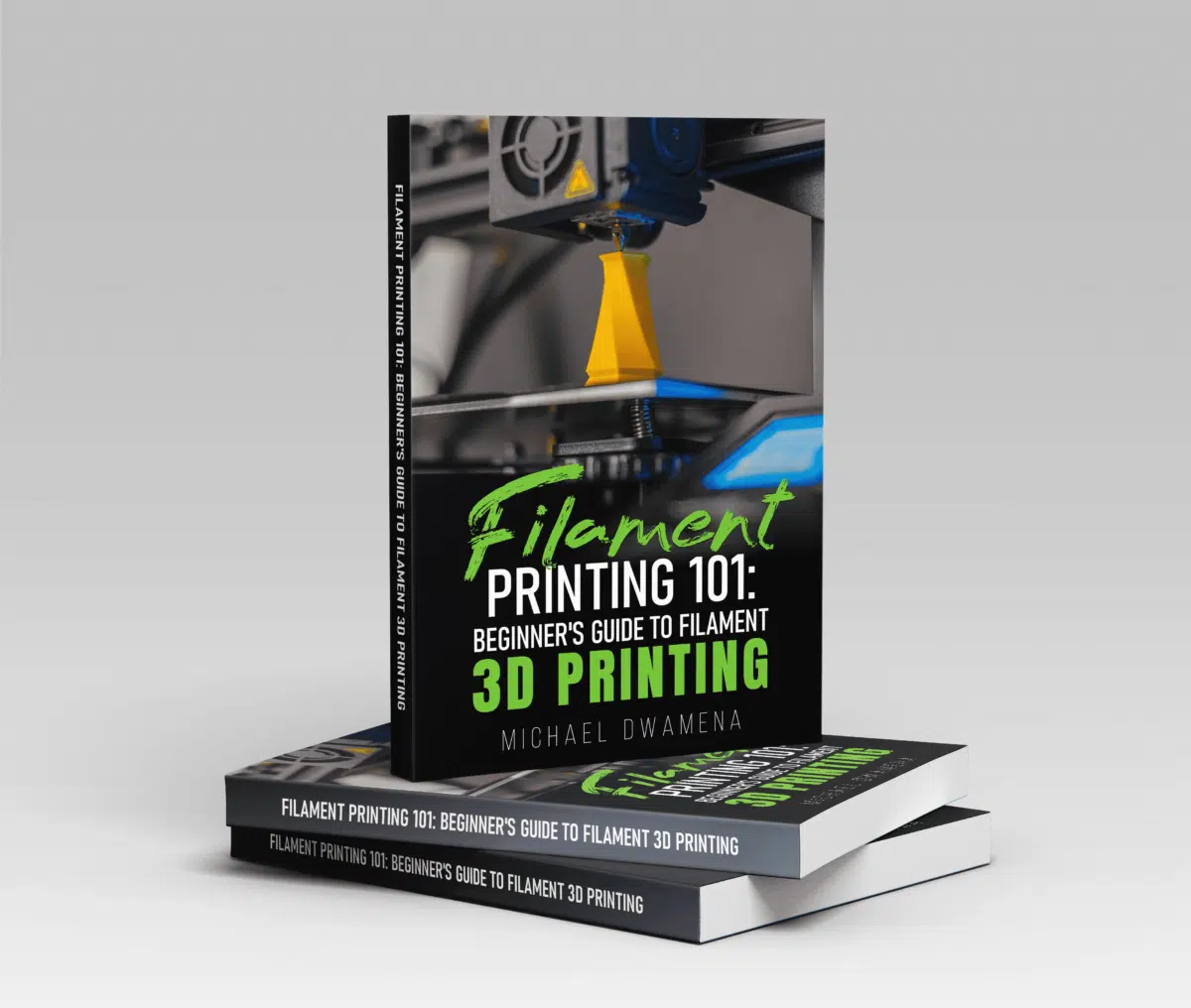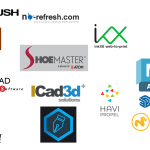The Ender 3 V2 and Ender 3 Pro are extremely easy to update. In fact, unlike the original Ender, these machines load updates via a microSD card, meaning you don’t have to worry about a bootloader or flashing firmware.
In most cases, this means that you can finish your Ender 3 V2 or Pro update in just a few minutes.
In fact, you don’t have to update Ender 3 V2 firmware with a USB. This also means that if you lose the microSD card that comes with your printer, you’ll have to buy a new one.
You might also choose to use a third-party program like Octoprint to update it via USB.
Preparing Ender 3 For Firmware Update
Installing a Creality firmware update is very easy if you have an Ender 3 V2 or Pro.
It may be much more complicated if you have an old Ender 3 with an 8-bit board.
Check Current Firmware Version
From the main screen, select Info.
It will tell you the current firmware version on your machine. It should look something like “Ver X.X.X”.
Check the Mainboard
Creality uses different mainboards for the Ender 3 V2 models and for different Ender 3 Pro models.
This means that you’ll have to check which mainboard is on your machine. There’s a firmware download per mainboard.
- Our new Filament Printing 101 Course is just for you! Lean how to create perfect professional prints without all the hassle.
- Don't let common mistakes hold you back, click the link to learn more and get ahead now!
In addition, for each mainboard variant, there are 3 or more files available. These include:
- Mainboard
- Mainboard, CRTouch
- Mainboard, SpiritEXT
- MultiLanguage (Europe)
- FDM Laser
- High-Temperature Full Hotend Kit
- 32-Bit
- 8-Bit
If you purchased an adaptor or adaption kit, such as the BLTouch, filament runout sensor, or a Hotend Kit, you’ll need the firmware for that kit. That’s also true if you’re installing a kit for the first time.
In addition, you’ll have to check the mainboard number, and you’ll have to open up the machine to do it.
However, once you have it, you can save a photo of the mainboard in a file and you won’t have to re-open up the machine again next time.
- Move the print deck out of the way.
- Remove the screw from the top of the electronics cover.
- Gently lay the printer on its side.
- Remove the three screws on the bottom of the electronics cover.
- Make sure you separate the screws and put them back in their original holes. One is longer than the others.
- Undo the clip holding the cover on. You may simply set it on the table, without putting too much pressure on the fan. If you don’t have space, you may also choose to disconnect the fan from the board.
- Find the Creality logo, centered on the board.
- Underneath that, you’ll find the “Board revision number”, e.g. V4.2.7.
- Write this down, or take a photo of the board.
- Put the fan and the cover back, being sure to put the screws back in their original places.
Here, your board will tell you several things:
- If the board revision number starts with a 1, you have an 8-bit board, you’ll need the 8-bit version of the firmware.
- All 8-bit boards but the 1.1.5 come without a USB mini, so you’ll have to connect the printer to a PC to load the new firmware.
- If the board revision number starts with a 4, you have a 32-bit board, you’ll need the 32-bit version of the firmware.
The Ender 3 should have an adapter installed, which means that you won’t have to worry about installing bootloaders or flashing the firmware, like you would with the old Ender.
However, if you’ve installed an old 8-bit board, you may have to do so anyway.
Gather Supplies
You’ll need:
- An empty microSD card. (You can also back up an existing SD card and delete everything on it and then reload it later.)
- The copy of your firmware for your update. You can find it here. Compare available options to those on your printer and check the compatibility with your mainboard. All the information you need is in the title. If the version is the same as you already have, your firmware is up to date.
- Creality normally uses zipped files in .rar. You may need a program like WinRAR or Keka to unzip it. Do this, so that you have a .bin file.
- An SD card reader if your laptop or PC does not come with one equipped.
How To Update Ender 3 (Pro/V2) Firmware
If you’re updating the firmware on an Ender 3 V2 or Pro, you should be able to update the firmware via a microSD card rather than by flashing the firmware with a USB cable.
This means that the process is very simple.
Load the .bin on the microSD Card
Copy the .bin file from the unarchived/unzipped firmware download onto the microSD card.
Double-check that it finishes copying and that the file is complete. Then, eject the microSD from the computer using the software application.
Physically remove the microSD card from the computer.
Ready the Printer
Shut down the Ender 3 using the power switch.
Wait for it to finish shutting down.
Insert the microSD Card
Insert the microSD card into the Ender3 printer.
The SD card slot is on the electronics housing, usually just at the front or next to the USB mini port.
Load the Firmware
Turn the Ender 3 back on using the power button and wait for it to boot the firmware. You can see the update progress on the LCD screen, which will display a blank black image during the update.
Do not cut power or turn your printer off at this point. If you do so, you may brick your printer.
Wait for the loading screen and the full restart before doing anything else. Then, remove the microSD card.
Your Ender 3 Pro or V2 is now updated. You can go to info to verify that the update worked.
Ender 3 (Pro/V2) Firmware Not Updating
If your Ender 3 is taking too long to update or not updating, it likely means you’ve run into issues.
Existing Firmware Is Up to Date
If you’re trying to update your firmware and not getting anywhere, it may mean you’re trying to install the same version of the firmware that’s already on the mainboard.
- Check Info and double-check the firmware version number.
- Double-check that your SD card has the latest version of the firmware on it.
SD Card Not Empty
You might not be able to update your Creality firmware if you’re trying to use a card that already has other data on it. In this case, simply wipe the SD card, re-load the .bin file, and try again.
You can always back the SD card up on your computer to prevent it from using data, and then reload that data after you manage the update.
Black Screen Doesn’t Go Away
If the black loading screen doesn’t go away during the firmware update, it may mean that your SD card is improperly formatted.
In this case, turn the printer off. Then, remove the microSD card.
From there, you can insert the microSD card back into your computer and reformat it as an MS-DOS (FAT) volume. Then reload the firmware and try again.
SD Card Formatting
You might also have issues with SD card formatting. In this case, Creality might not recognize that you have an update on the card. It will then simply turn on as normal and it will ignore the card.
Alternatively, it may boot but not load any firmware. In either case, you’ll have to reformat the SD card to fix the issue. Use MS-DOS (FAT).
File Name
If you’re downloading the firmware from an unofficial source, you might have to rename the firmware.
Here, the file must start with “firmware” (no caps) and end with “.bin”. If there are numbers before “firmware”, you can move them after “firmware” in the name or simply delete them.
If you have other issues with your Creailty Ender 3 not loading the firmware, it’s usually a good idea to contact Creality directly.
In some cases, the issue may be that your firmware isn’t compatible with your Ender 3. In others, it may be a hardware issue and you’ll have to replace or fix the printer to solve the issue.
Final Thoughts
It’s relatively easy to update the firmware on your Creality Ender 3 V2 or Pro. Unlike the old 8-bit models, the V2 and Pro have more onboard memory, allowing them to load firmware from the SD card.
However, you will have to ensure that you get the right version of the firmware. That normally means checking your mainboard.
In addition, if you chose to install an older mainboard (e.g., while making repairs), you’ll still have to use the old bootloader method with a USB – in this case, the Ender 3 V2 does have a USB port. However, this scenario is extremely unlikely.
Otherwise, you should just be able to load the .bin file from your download directly onto a microSD card and load it into the printer, while the printer is off. Afterwards, installing the firmware is a simple matter of restarting the printer.



